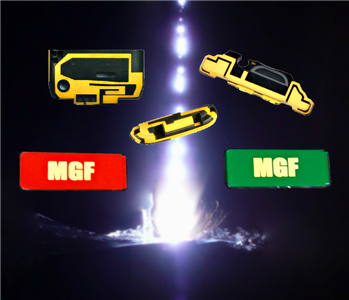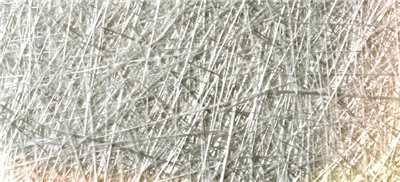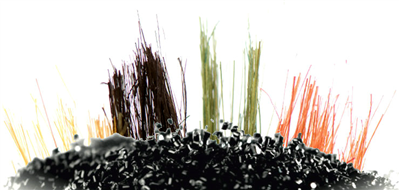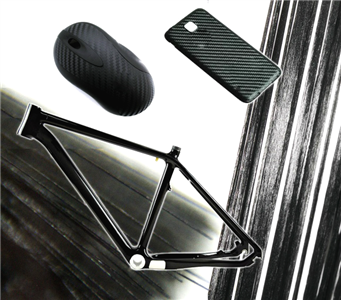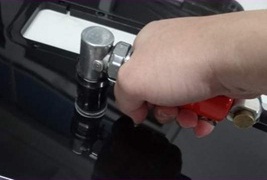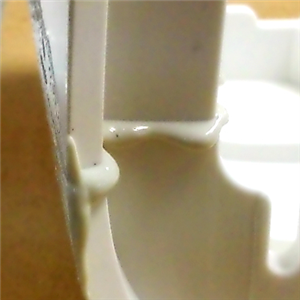Color Laser Directly-shaped plastics
This type of plastics can make direct coating on certain parts of a metal product. It uses laser technology to draw a pattern on general plastics, and then covers the metal with chemical membrane, and a metal liner pattern will appear. It bestows the materials with the functions of electrical communication, element support, plastic membrane support, and protection, sutiable to be used for antenna of mobile phones or conductive circuit. A combination of mechanic, protection, and anttena functions, it’s suitable to be used for antenna of mobile phones, auto electric circuit, medical equipment, etc. It makes products even more compact and light-weight, while enabling the product to avoid interprution caused by internal metal substances.
Long Glass Fiber Composite
The thermal plastics added with long glass fiber composite is one kind of highly functional composite material, with good tenacity, high strength, low density, and excellent anti-erosion and heat-resistant properties, comparable to the aluminum/magnesium alloy.Moreover, it’s easy to shape, durable, and recyclable, serving as one kind of low energy-consuming and pollution-free green materials. Compared to other materials to be used for the main structure, it’s similar in mechanical strength while its weight can be reduced by over 80%, widely applied to automobile, construction, chemical, packaging, electricity, and transportation sectors.
Fiber composite
Through combination of various types of fiber and resin, the fiber composite is used to strengthen the property or functionality of a material of which fiber is the key ingredient to determining the material’s mechanical property, strengthening its load durability, restraining minor crack from extending, and makes the material even more rigid, anti-fatigue, and resistant to creep deformation.Fiber comes in various types in terms of ingredients and forms. As for ingredients, the widely-used fibers include glass fiber, carbon fiber, Levlar Fiber, boron fiber, and SiC fiber, weaving fiber, and powered fiber. Regarding the forms, the common types include short fiber, continuous filament, woven fiber, and powdered fiber. On the fiber application market, the continuous fiber is the most widely-used as the reinforced fiber material for the auto parts and aerospace industries which have relatively higher requirement for the strength of materials.
Reinforced Carbon Fiber Composite Material
Carbon fiber, with the properties of high hardness, high strength, light weight, high resistance to chemicals, heat-resistance, and low thermal expansion, is regarded a high-end fiber material. Reinforced carbon fiber composite material performs even harder and weighs even lighter, making a better alternative to most engineering plastics and sees a very wide range of application. It’s highly likely to replace most engineering plastics for use in aerospace, civil engineering, military, and sporting equipment industries. Meanwhile, it sees increasing application in the industries of tablet PC and smart phones.
BMC Technology Application
The BMC (bulk molding compounds) material is made with the primary ingredients of GF (chopped glass fiber), UP (unsaturated polyester resin), MD (filler), and various additives which, through full blending, become dough-shaped prepreg.With excellent electric functionality, mechanical function, heat-resistant property, the material is resistant to chemical-erosion, suitable to be shaped to meet requirements of craftsmanship to satisfy the property demand of various kinds of products. Megaforce masters the characteristics of BMC materials and owns the capability for BMC processing and production.
Low-shrink Thermoplastics
It selects specially-modified thermosetting resin as the base ingredients, combined with ideal percentage of additives and fillers, to produce the low-shrink thermoplastics with excellent solidifying contraction coefficient and thermal performance. After curability, its Tg soars to 140℃, making it highly resistant to rigid environment, while characterized by the properties of non-hanging, long storage time, harmless to human body, and environment-friendly properties.For those products demanding high structural strength, resistance to heat, and high precision, the low-shrink thermoplastics with these properties can be applied to its maximum. It’s applicable to general metal, plastics, or compound materials, especially suitable for BMC, PU and the materials requiring special adhesion. Low-shrink thermoplastics can be made with customized recipe based on customer’s demand.
